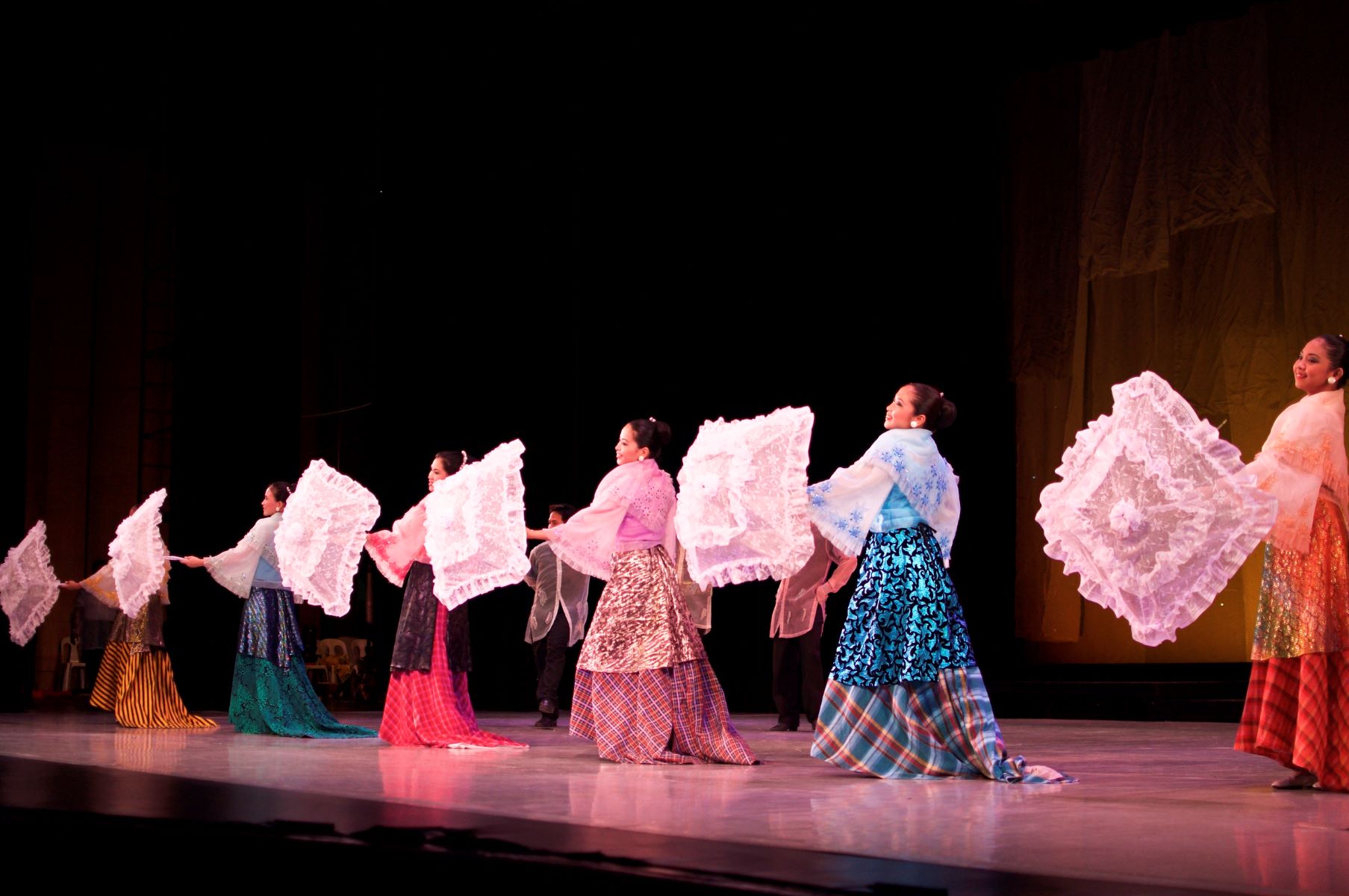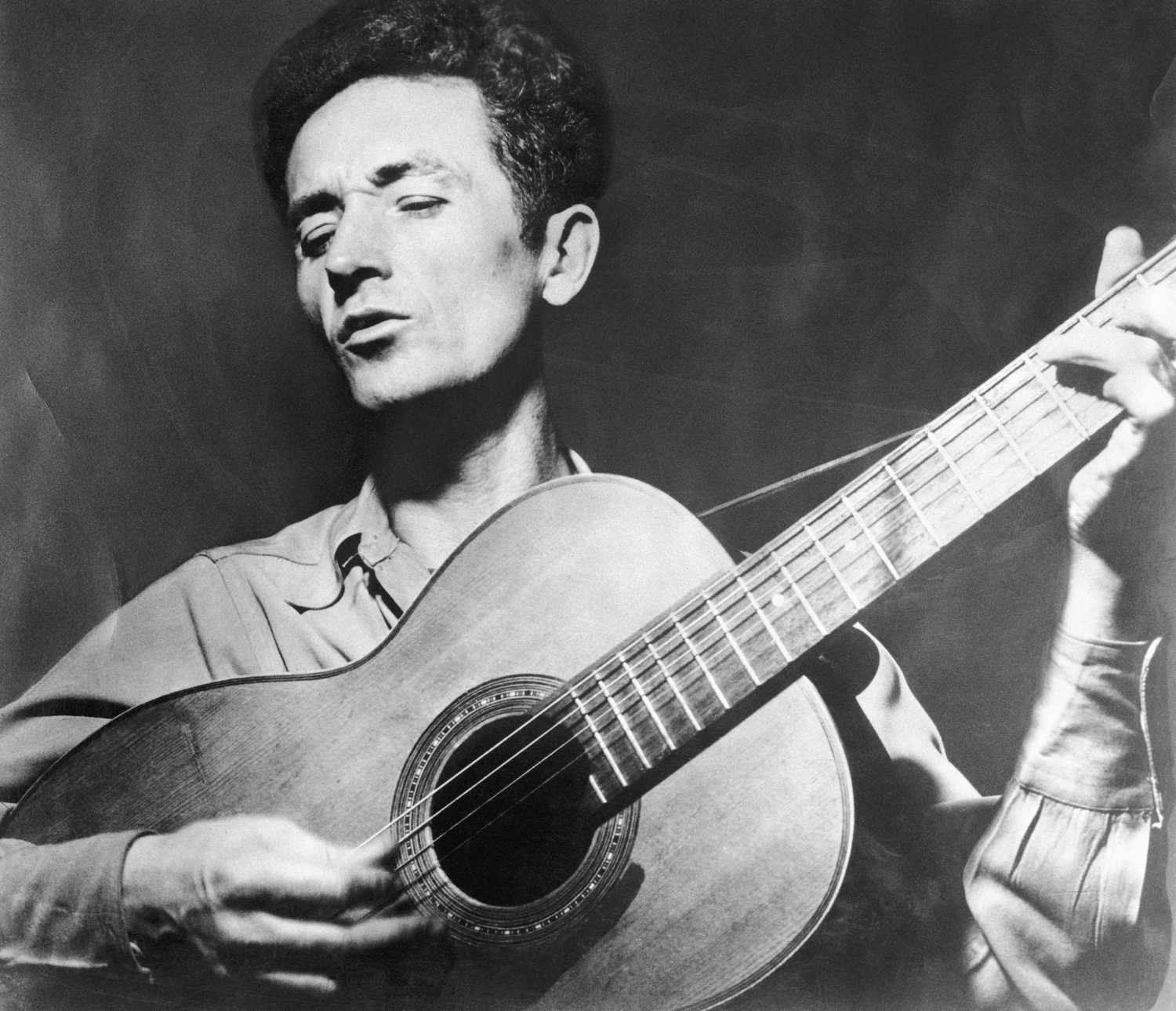Home>Genres>Folk>What Was The Anthology Of American Folk Music?


Folk
What Was The Anthology Of American Folk Music?
Modified: January 22, 2024
Discover the captivating history of American folk music with the iconic Anthology of American Folk Music. Explore the rich heritage and timeless melodies of this beloved genre.
(Many of the links in this article redirect to a specific reviewed product. Your purchase of these products through affiliate links helps to generate commission for AudioLover.com, at no extra cost. Learn more)
Table of Contents
Introduction
American folk music has a rich and storied history, deeply rooted in the cultural fabric of the nation. It has served as a powerful medium for storytelling, social commentary, and cultural preservation. One influential milestone in the exploration and popularization of American folk music was the “Anthology of American Folk Music.”
This groundbreaking collection, compiled by avant-garde filmmaker and musicologist Harry Smith in the 1950s, played a pivotal role in bringing obscure and forgotten folk recordings to a wider audience. It showcased the diversity and depth of American folk traditions, spanning various genres such as blues, country, gospel, and old-time music.
In this article, we will delve into the origins of American folk music, the birth of the “Anthology of American Folk Music,” its contents, and its lasting impact on both artists and listeners. We will also examine the anthology’s influence, criticisms, controversies, and its lasting legacy, which continues to resonate with music enthusiasts and scholars to this day.
The Origins of American Folk Music
American folk music traces its roots back to the early settlers of North America, who brought with them a variety of musical traditions from their homelands. These traditions merged with indigenous Native American music and African musical influences brought by enslaved people, resulting in a unique blend of sounds and styles.
During the 19th century, folk music flourished as a means of cultural expression and storytelling among various communities across the United States. It served as a reflection of people’s daily lives, struggles, joys, and aspirations. Whether performed on front porches, in community gatherings, or during work songs, American folk music captured the essence and spirit of everyday people.
Genres such as blues, country, and gospel evolved from this rich tapestry of folk music. African-American blues artists expressed their hardships and emotions through soulful lyrics and captivating melodies, while country music emerged from the rural areas of the South, telling tales of love, heartbreak, and the simple pleasures of life. Gospel music provided solace and spiritual inspiration, rooted in the African-American church tradition.
As America expanded and developed, folk music continued to evolve and adapt, reflecting the changing social and cultural landscape. It became intertwined with movements for social justice and political change, with iconic figures like Woody Guthrie and Pete Seeger using their music as a vehicle for activism and protest.
The Birth of the Anthology of American Folk Music
The inception of the “Anthology of American Folk Music” can be credited to the visionary efforts of Harry Smith, a filmmaker, artist, and devoted collector of folk recordings. In the 1950s, Smith painstakingly curated a groundbreaking compilation of American folk music, intending to preserve and revive forgotten and overlooked recordings.
Released in 1952, the anthology was comprised of three volumes, each representing a distinct era of folk music. Volume one focused on ballads and traditional folk songs from the early 20th century, while volumes two and three explored the genres of blues and country respectively.
What set the anthology apart was not just its comprehensive approach, but also the diversity of artists and recordings it showcased. Smith sought to capture the essence of American folk music by featuring lesser-known artists alongside well-known figures such as Mississippi John Hurt, The Carter Family, and Blind Lemon Jefferson.
Though the anthology did not gain immediate commercial success, it garnered critical acclaim and quickly gained a cult following among musicians, folk enthusiasts, and scholars. Its impact would be felt not just in the revival of interest in folk music, but also in the subsequent folk revival movements of the 1950s and 1960s.
Smith’s meticulous attention to detail extended beyond the selections themselves. He also included extensive liner notes, providing historical context and analysis of the songs. These notes not only helped listeners appreciate the depth of the anthology but also solidified it as a significant scholarly resource.
The release of the “Anthology of American Folk Music” breathed new life into forgotten recordings, preserving a remarkable part of America’s musical heritage. It played a crucial role in sparking a renewed interest in American folk music and served as a catalyst for the folk revival movements that would shape the musical landscape for years to come.
The Vision of Harry Smith
Harry Smith, the mastermind behind the “Anthology of American Folk Music,” had a unique and ambitious vision for the project. As an avant-garde filmmaker and musicologist, Smith recognized the importance of preserving and sharing the vast tapestry of American folk music.
Smith’s passion for collecting recordings began in the 1940s when he started amassing a diverse collection of 78 RPM records. He tirelessly searched for rare and distinct recordings, scouring thrift stores, flea markets, and even trading with fellow collectors. His collection eventually grew to include thousands of records spanning a wide range of genres and artists.
Smith saw the “Anthology of American Folk Music” as a means to expose these forgotten and underappreciated recordings to a wider audience. He aimed to shine a spotlight on the diverse musical traditions that had shaped American culture and provide a platform for further exploration and appreciation.
Smith’s passion for music went beyond just preservation; he saw it as a powerful force that could connect people across time and space. His eclectic collection showcased the shared human experiences encapsulated in the songs and melodies of generations past.
With the “Anthology of American Folk Music,” Smith aimed to bridge the gap between the eras of folk music and foster a deeper understanding of the cultural history and heritage of the United States. He wanted listeners to not only enjoy the music but also to delve into the stories and traditions behind each recording.
Furthermore, Smith’s meticulous attention to detail in the packaging of the anthology demonstrated his commitment to presenting the recordings in a scholarly and comprehensive manner. The inclusion of extensive liner notes, song lyrics, and carefully curated artwork further enhanced the immersive experience for the listener.
Ultimately, Smith’s vision for the “Anthology of American Folk Music” was to provide a gateway into the rich and diverse world of folk music. His dedication to preserving these recordings and his passion for celebrating the cultural heritage embedded within them ensured that the anthology would become a seminal work that continues to inspire and captivate audiences to this day.
Contents of the Anthology
The “Anthology of American Folk Music” is a treasure trove of recordings, spanning three volumes and showcasing a wide array of genres and artists. Let’s explore the contents of each volume:
-
Volume One: Ballads
This volume focuses on traditional ballads and folk songs from the early 20th century. It features haunting melodies and poignant storytelling, capturing the essence of a bygone era. Included are recordings by artists such as Buell Kazee, The Carolina Tar Heels, and Blind Lemon Jefferson.
-
Volume Two: Social Music
Volume two explores the genre of blues, showcasing the raw and soulful voices of African-American artists. It features recordings of legendary figures like Mississippi John Hurt, Blind Willie Johnson, and Charley Patton. The blues selections delve into themes of love, hardship, and the struggles of Black Americans.
-
Volume Three: Songs
The third volume of the anthology explores the genre of country music, including recordings by iconic artists like The Carter Family, Jimmie Rodgers, and Uncle Dave Macon. These songs tell stories of rural life, love, and the yearning for simpler times.
Each volume of the anthology is carefully curated, presenting a cohesive narrative of American folk music. The recordings within capture the various styles, influences, and traditions that shaped the musical landscape of the United States.
It is important to note that the anthology also includes extensive liner notes, providing historical context and analysis for each recording. Additionally, Smith included visual artwork and illustrations that complement the music and further enhance the overall experience for the listener.
By presenting such a wide range of genres and artists, the “Anthology of American Folk Music” offers a comprehensive and immersive journey through the rich tapestry of American cultural heritage.
Influence and Impact of the Anthology
The “Anthology of American Folk Music” has left an indelible mark on the world of music, influencing artists, scholars, and listeners alike. Its impact can be observed in several key areas:
Revival of Interest: The anthology played a pivotal role in reviving interest in American folk music during the 1950s and beyond. It introduced a new generation of listeners to the beauty and depth of traditional folk recordings, inspiring a renewed appreciation for the genre.
Folk Revival Movements: The anthology served as a catalyst for the folk revival movements of the 1950s and 1960s. Artists such as Bob Dylan, Joan Baez, and Pete Seeger drew inspiration from the recordings and styles showcased in the anthology, incorporating them into their own music and performances.
Scholarly Resource: The extensive liner notes included in the anthology solidified it as a valuable scholarly resource. The comprehensive historical context provided by the notes helped shape the understanding and study of American folk music, serving as a reference for researchers and musicologists.
Preservation of Heritage: The anthology played a crucial role in preserving obscure and forgotten recordings, ensuring that they were not lost to the sands of time. Its inclusion of rare and previously undiscovered gems of American folk music helped preserve a significant part of the nation’s cultural heritage.
Cross-Cultural Exchange: The anthology provided a platform for showcasing the diverse musical traditions within American folk music. By featuring a wide range of genres and artists from various cultural backgrounds, it promoted cross-cultural exchange and appreciation.
Expansion of Musical Horizons: The anthology expanded the musical horizons of listeners, introducing them to unfamiliar genres and styles. Its eclectic mix of recordings encouraged exploration and discovery, broadening the musical tastes and interests of its audience.
The “Anthology of American Folk Music” left an enduring legacy that continues to resonate with music enthusiasts and scholars to this day. Its influence can be seen in the continued popularity of folk music, as well as the lasting impact it had on shaping the trajectory of American popular music.
Criticisms and Controversies Surrounding the Anthology
While the “Anthology of American Folk Music” is widely regarded as a seminal work, it has not been without its fair share of criticisms and controversies. Let’s explore some of the main points of contention:
Exclusivity and Omissions: One criticism of the anthology is that it was not fully representative of the diverse spectrum of American folk music. Some argue that certain regions and genres were overlooked, leading to a limited portrayal of the overall folk music landscape. Additionally, the anthology predominantly featured recordings by white artists, raising questions about inclusivity and representation.
Cultural Appropriation: The inclusion of recordings by white artists performing African-American blues and other genres raised concerns of cultural appropriation. Critics argue that the anthology didn’t adequately credit or acknowledge the African-American origins and influences of certain musical styles.
Editorial Bias: Harry Smith’s personal preferences and biases in selecting recordings for the anthology have also faced criticism. Some argue that his choices were based more on personal taste rather than a comprehensive representation of American folk music. This led to the exclusion of certain influential artists and recordings that others believe should have been included.
Commercialization of Folk Music: The release of the anthology brought folk music into the mainstream consciousness, leading to concerns about its commercial exploitation. Some felt that the commercial success of the anthology overshadowed the grassroots and often politically charged nature of folk music, diluting its original intentions.
Historical Accuracy: There have been debates about the historical accuracy of certain recordings included in the anthology. Some claim that some of the recordings were not true representations of traditional folk music, but rather reinterpretations or stylized performances by artists aiming to cater to the taste of the era in which they were recorded.
It is important to note that these criticisms and controversies do not diminish the significance and impact of the anthology. Instead, they provide an opportunity for critical exploration and discussion about the complexities of representing a vast and diverse musical tradition.
Legacy and Lasting Significance of the Anthology
The “Anthology of American Folk Music” holds a lasting significance within the realms of music, culture, and scholarship. Its impact and legacy can be observed in several key aspects:
Revitalizing Traditional Music: The anthology played a crucial role in revitalizing traditional American folk music, breathing new life into forgotten recordings and inspiring a renewed interest in the genre. It helped preserve and reintroduce these important cultural artifacts to a wider audience.
Influencing Folk Revival Movements: The anthology served as a key influence for the folk revival movements of the 1950s and 1960s. It inspired artists such as Bob Dylan, Joan Baez, and Pete Seeger, who went on to shape the trajectory of American popular music and sparked a renewed interest in folk music among a new generation of listeners.
A Resource for Scholars and Musicologists: With its extensive liner notes and comprehensive analysis, the anthology has become a valuable resource for scholars and musicologists. The meticulous documentation of the recordings provides historical context and insight into the evolution of American folk music, aiding in the understanding and study of the genre.
Preserving Cultural Heritage: The anthology’s meticulous curation and preservation of obscure and forgotten recordings have contributed to the preservation of America’s rich cultural heritage. It serves as a time capsule that captures the essence of different eras, regions, and cultural influences that shape the diverse tapestry of American folk music.
Encouraging Cross-Cultural Appreciation: The anthology’s inclusion of diverse genres and artists paved the way for cross-cultural appreciation. By showcasing the interplay of musical traditions from various cultural backgrounds, it fostered a greater understanding and appreciation of the diverse roots of American folk music.
Elevating Folk Music as a Genre: The anthology’s impact in bringing folk music to the forefront of popular consciousness cannot be understated. It elevated the status of folk music as an important and influential genre, solidifying its place in the broader music landscape and opening the doors for subsequent generations of folk musicians to follow.
The “Anthology of American Folk Music” remains a definitive and influential collection that continues to inspire musicians, scholars, and enthusiasts to explore the rich and diverse heritage of American folk music. Its legacy lives on as a testament to the power of music to connect people, preserve cultural history, and ignite creative expression.
Conclusion
The “Anthology of American Folk Music” stands as a landmark contribution to American musical history. Through the vision of Harry Smith, it brought to light forgotten recordings, inspired folk revival movements, and shaped the understanding and appreciation of American folk music.
This comprehensive collection showcased the diversity and depth of American folk traditions, spanning genres such as ballads, blues, and country. It preserved a significant part of the nation’s cultural heritage, offering a glimpse into the stories, struggles, and joys of everyday people throughout history.
The anthology’s influence and impact can be seen in the continued popularity of folk music and its enduring presence in contemporary music. It revitalized interest in traditional folk music, influencing artists who went on to shape the musical landscape of the 20th century and beyond.
Moreover, the anthology served as a valuable resource for scholars and musicologists, providing historical context and analysis of the recordings. It fostered cross-cultural appreciation, expanding musical horizons and promoting a deeper understanding of the diverse roots of American folk music.
While the anthology has faced criticisms and controversies, these discussions provide an opportunity for critical exploration and a deeper understanding of the complexities of representing a vast and diverse musical tradition.
In conclusion, the “Anthology of American Folk Music” holds a lasting significance, preserving a vital part of American cultural heritage and inspiring generations of musicians, scholars, and enthusiasts. It remains a testament to the power of folk music to connect people, tell stories, and shape the cultural fabric of a nation.











